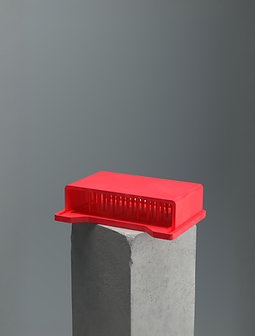Publication-Ready Data: Making A Grouped Bar Chart with Error Bars in GraphPad Prism
- CLYTE research team

- Oct 22
- 4 min read

For biomedical researchers, clear and accurate data visualization is not just a reporting step—it's a critical component of scientific storytelling and achieving publication success. A well-designed graph can make the difference between a paper that is easily understood and one that struggles to convey its central findings. Among the most common and powerful visual tools in the life sciences is the grouped bar chart with error bars, which effectively compares means across multiple experimental conditions.
You might also be interested in this general guide for GraphPad Prism! Ask Sophie how to make a grouped bar chart Prism!
This guide will provide you with the ultimate framework for creating these essential figures in GraphPad Prism, ensuring your charts are not only statistically sound but also visually compelling and ready for the highest-impact journals.
1. The Foundation: Mastering the Grouped Data Table in GraphPad Prism
The most common mistake when starting a grouped bar chart in Prism is selecting the wrong data table format. For grouped bar graphs, you must choose the Grouped data table structure.
Data Entry Methods: Replicates vs. Pre-calculated Values
Prism offers two primary ways to enter your data, both of which are valid depending on your workflow:
Enter Replicates in Subcolumns (Recommended):
This is the most common and statistically robust method. You enter all individual replicate values (e.g., $n=5$ animals or wells) into the subcolumns for each group.
Prism’s Advantage: Prism automatically calculates the mean, Standard Deviation (SD), Standard Error of the Mean (SEM), and Confidence Intervals (CI) for you. This ensures consistency and reduces manual calculation errors. This is the optimal approach when your raw data is available.
Enter Pre-calculated Mean and Error Values Directly:
If you have calculated the mean and error values (SD or SEM) outside of Prism (e.g., in a spreadsheet), you can choose to enter them directly.
You would select the "Enter or import means, SEM, and N (or SD)" option when creating your table. You will need three subcolumns: one for the Mean, one for the chosen Error Value (SD/SEM), and a third for the Sample Size (N), which Prism needs for inferential statistics and calculating other error types if needed.
2. Plotting Excellence: Generating and Customizing Error Bars
Error bars are essential for illustrating the variability or precision of your data. Their interpretation depends entirely on which measure of variation you choose:
Error Bar Type | Definition | What it Represents | Ideal Use Case |
Standard Deviation (SD) | The spread of the individual data points around the mean. | Data Variability: Indicates how scattered the measurements are. | Descriptive statistics; showing the range of data values in a population. |
Standard Error of the Mean (SEM) | An estimate of how far the sample mean is likely to be from the true population mean. | Precision of the Mean: Indicates the reliability of your mean estimate. | Inferential statistics; typically used for comparing groups. |
95% Confidence Interval (CI) | A range of values where you are 95% confident the true population mean lies. | Statistical Certainty: Directly relates to statistical significance testing. | Publication; often preferred as a clear measure of effect size. |
Customizing Error Bars in Prism
Once your graph is generated:
Double-click any bar on the graph to open the Format Graph dialog.
Navigate to the Error Bars tab.
Here you can select which measure Prism should use for the error bars (SD, SEM, 95% CI) and customize the appearance (cap width, line thickness, color).
Handling Custom/Asymmetrical Errors: If you entered your data as Mean and N, but have asymmetrical error values (e.g., a custom upper and lower bound calculated from a complex statistical model), you must use the direct entry method and ensure your table has columns for Upper Error and Lower Error values.
3. Data Transparency: The Power of Individual Points
For maximum data integrity and transparency—qualities highly valued by journal reviewers and essential for a truly high-ranking scientific article—you must show your raw data. A bar chart alone can obscure the distribution of individual measurements, especially with small sample sizes.
The Solution: Overlaying Individual Data Points
Go back to the Format Graph dialog (or double-click the graph).
In the left pane, navigate to the dataset you want to modify.
Select the option to plot the individual data points (often referred to as a "Scatter" plot) over the bars. You can choose to:
Jitter the points slightly horizontally to prevent overlap (ideal for large N).
Stack the points.
Align the points directly over the corresponding bar.
By displaying both the mean (bar), the variability (error bar), and the raw data (scatter points), your figure becomes maximally informative, earning trust and increasing the likelihood of acceptance in high-impact publications.
4. Final Formatting for Journal Impact (Using Format Graph)
The Format Graph dialog is your control panel for creating a professional figure. Key areas for optimization include:
Axes: Use the Format Axes tool to set clear and appropriate ranges, and label the axes with units and clear descriptions.
Legends: Ensure your legend is concise, descriptive, and accurately maps colors/patterns to your experimental groups.
Color Scheme: Choose a color palette that is color-blind friendly and maximizes contrast. Avoid using excessive or distracting background colors.
Two-Way Layout: When dealing with grouped data (two factors, such as "Treatment" and "Time"), the dialog helps you format the X-axis to clearly separate your groups and sub-groups (e.g., grouping bars for 'Vehicle' and 'Drug' treatments at 'Day 1,' 'Day 3,' etc.).
By rigorously following these steps—from proper data entry in the Grouped table to transparent visualization with individual data points and appropriate error bars—you will master the creation of high-impact, statistically rigorous figures that drive scientific discovery and achieve high citation rates.



